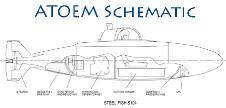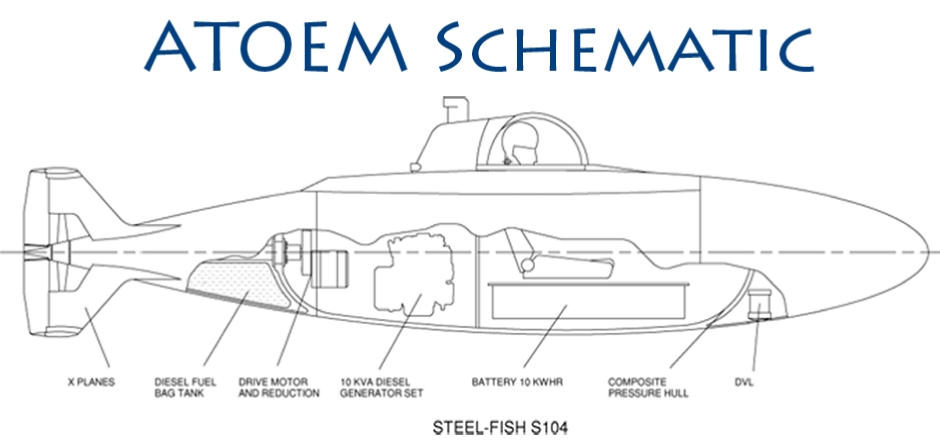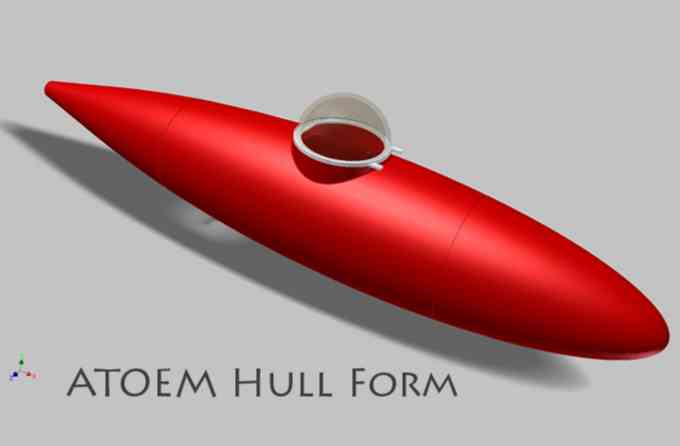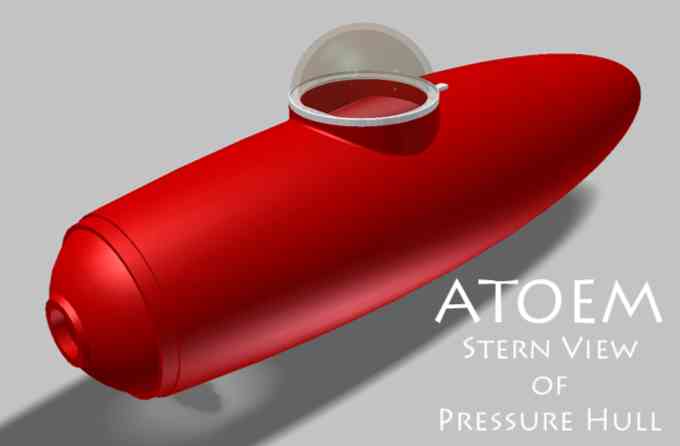
Copyright ©2014 Seaquester, Inc. All rights reserved.
ATOEM - Design
Our initial goal is to design, build and test the minimal proof-of-concept autonomous diesel-electric core of the ATOEM platform. The Steel-Fish S104 is a commercial one-man mini-sub capable of 100 m operation whose design will be converted to an AUV with auto surface and charge via a 10kW water-cooled diesel generator set. The hull is 3 cm thick and of composite Glass Reinforced Plastic (GRP) construction. The sub is 5 m long, weighs 1500 kg and is controlled by an industrial PLC and PC combination to navigate itself between pre-programmed waypoints like a normal AUV, but surfacing at intervals to recharge the battery and obtain a new GPS position update. The target for this demonstration will be 300 miles over a 3-day period running on the surface for 20% of the time. The pilot’s seat is retained so that in the early stages of the development, an engineer is present to ensure the correct sequence is being followed by the control system. This avoids the risk of losing the sub in this phase. For the fully autonomous trials, the pilot is replaced with additional battery capacity to extend the underwater duration and/or to power additional sensors. On the ‘surface’ command the vehicle runs up until the sail is above the water, then air is drawn into the mast to blow down the external ballast tanks in the nose and tail. Once this has taken place, the diesel generator start sequence commences. The diesel runs until the main battery is fully recharged while following a surface pattern, then shuts down and dives to resume the mission. Any untoward events are logged by the PLC, which makes basic decisions to over-come them. Water ingress through the mast is dealt with automatically, but if serious malfunctions occur, the sub shuts down and surfaces using on-board high pressure (HP) air. As the sub is slightly positively buoyant at all times, even if the sub is ‘dead in the water’ it will rise to the surface and radio its location. Diesel fuel for the mission is stored in a flexible bag tank housed in the aft external ballast tank. Fuel is pumped into an internal day tank, the level of which is controlled to counteract the buoyancy of the fuel in the bladder. Further evolution of the platform will add improved navigation capabilities (e.g., Inertial Navigation System - INS), additional sensors, and greatly expanded mission planning and control software to demonstrate increasing levels of Science Autonomy. Following the successful completion of this proof-of-concept demonstration, we intend to design and build a much larger, modular ATOEM platform capable of demonstrating fully autonomous launch, recovery and servicing of smaller AUVs.



Sequestering CO2 in the deep ocean...


